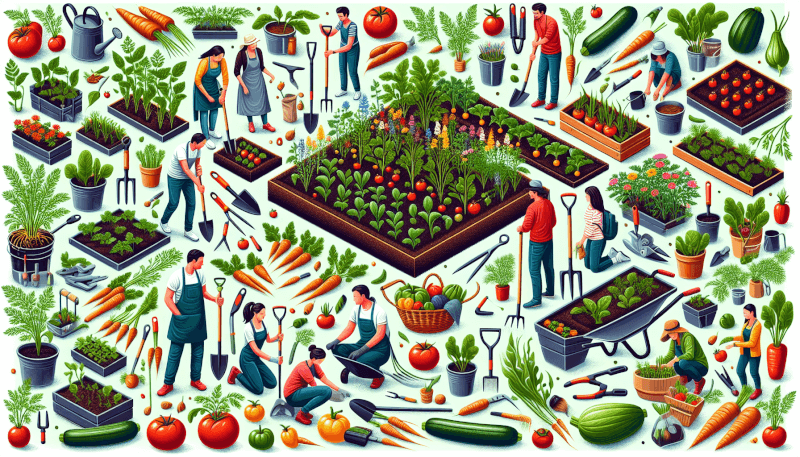Imagine stepping outside your back door and plucking fresh, vibrant vegetables straight from your own garden to prepare a delicious, healthy meal. Starting your own garden is not only a fulfilling hobby but also a practical way to ensure your ingredients are fresh, pesticide-free, and full of nutrients. In this article, you will discover the essential steps to begin your own garden, from selecting the right location to nurturing your plants to fruition. Whether you have a small balcony or a spacious yard, anyone can create their own garden and reap the rewards of homegrown goodness.
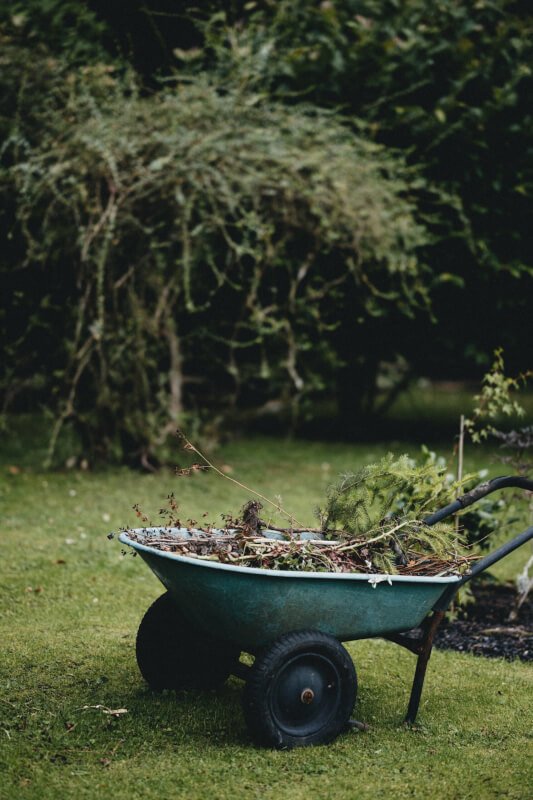
Choosing the Right Location for Your Garden
Consider the amount of sunlight
When choosing the location for your garden, one crucial factor to consider is the amount of sunlight it receives. Most plants require at least six hours of direct sunlight per day to thrive. Take note of the areas in your yard that receive the most sunlight and select a spot that fits this requirement. Keep in mind that different plants may have varying sunlight needs, so it’s a good idea to research the specific requirements of the plants you intend to grow.
Check the soil quality
The soil quality is another critical aspect to consider when selecting a location for your garden. Different plants flourish in different soil types, so it’s essential to assess the soil quality in your chosen area. Conduct a soil test to determine the pH level, nutrient content, and texture of the soil. This will help you understand if any amendments are necessary to create the optimal growing conditions for your plants.
Evaluate the drainage
Proper drainage is vital for the health and success of your garden. Excess water can drown plants and promote the growth of harmful bacteria and fungi. Evaluate the drainage in your chosen location by checking if water tends to pool or if the area becomes waterlogged during heavy rainfall. If the area has poor drainage, consider implementing solutions such as raised beds, adding organic matter to improve soil structure, or creating a French drain system.
Assess available space
Assessing the available space in your chosen location is crucial to ensure that your plants have enough room to grow and thrive. Consider both the horizontal and vertical space available. Some plants, like tomatoes and beans, require trellises or stakes to support their growth. Take your space limitations into account and ensure that your chosen location can accommodate the size and growth habits of the plants you plan to grow.
Deciding What to Grow in Your Garden
Research suitable plants for your region
Before deciding what to grow in your garden, it’s important to research and identify suitable plants for your specific region. Consider the climate, average temperatures, and length of the growing season in your area. Certain plants thrive in cooler climates, while others require warmer temperatures. Additionally, some plants may be better suited for specific soil conditions or have higher resistance to local pests and diseases.
Consider your dietary preferences
When planning your garden, it’s essential to consider your dietary preferences. Think about the fruits, vegetables, and herbs that you and your family enjoy eating the most. This will ensure that you’re growing crops that you will truly appreciate and make use of in your recipes. Don’t be afraid to experiment and try growing some unique or lesser-known varieties alongside your staple favorites.
Select plants that complement each other
Choosing plants that complement each other can be beneficial for maximizing productivity and minimizing pest problems. Some plants have natural pest-repellent properties, while others attract pollinators that help with fruit set. Consider companion planting, such as planting marigolds near tomatoes to deter pests or intercropping herbs to protect and enhance the growth of neighboring vegetables.
Opt for easy-to-grow vegetables and herbs
If you’re a beginner gardener or have limited time to dedicate to your garden, it’s wise to select easy-to-grow vegetables and herbs. These plants tend to be more forgiving and require less maintenance. Some examples of easy-to-grow plants include lettuce, radishes, zucchini, basil, and mint. Starting with these varieties will help you build confidence and experience before venturing into more challenging crops.
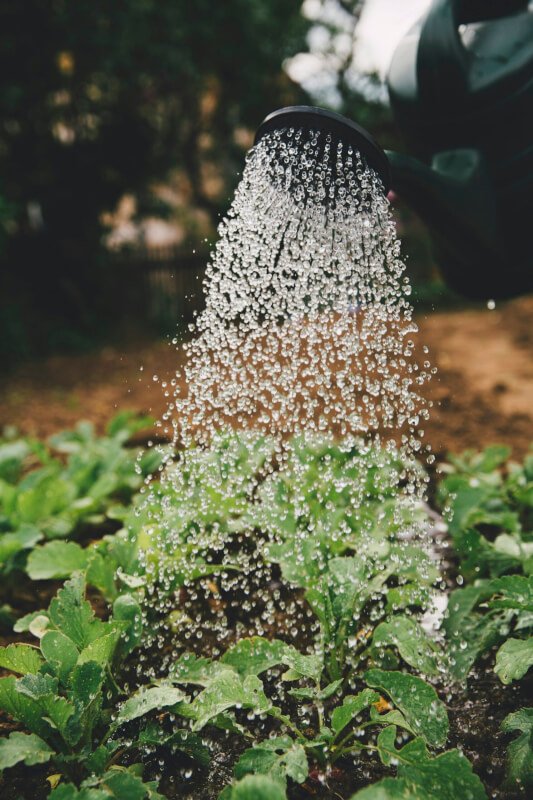
Preparing the Soil
Clear the area of debris and weeds
Before you begin preparing the soil, it’s important to clear the area of debris and weeds. Remove any rocks, branches, or other objects that may hinder the growth of your plants. Additionally, thoroughly remove any existing weeds by pulling them out from the root. This will prevent them from competing with your crops for nutrients and space.
Loosen the soil
To create an optimal growing environment for your plants, it’s crucial to loosen the soil. Using a garden fork or a tiller, gently break up the compacted soil to allow for better root penetration and water absorption. Be careful not to overwork the soil, as excessive tilling can disrupt the soil structure and lead to compaction in the long run.
Amend the soil with organic matter
To improve the fertility and structure of your soil, it’s highly recommended to amend it with organic matter. This can include compost, well-rotted manure, or other organic materials. Incorporating organic matter into the soil helps enhance its moisture retention, drainage, and nutrient-holding capacity. Spread a layer of organic matter over the top of the soil and work it in using a garden rake or shovel.
Ensure proper soil drainage
In addition to incorporating organic matter, ensuring proper soil drainage is crucial for the health of your plants. If your soil has poor drainage, it can lead to root rot and other issues. To improve drainage, consider adding sand or perlite to the soil mixture. Additionally, raising the garden bed or creating raised beds can help improve drainage for areas with heavy clay soils.
Starting from Seeds or Seedlings
Understand the pros and cons of each method
When starting your garden, you have the option to either start from seeds or purchase seedlings. Understanding the pros and cons of each method can help you make an informed decision. Starting from seeds allows for a wider variety of plant options and is more cost-effective. However, it requires more time, attention, and careful monitoring. Seedlings, on the other hand, provide a head start and are less susceptible to failure, making them a good option for beginners or those with limited time.
Start seeds indoors before transplanting
If you choose to start from seeds, it’s often necessary to begin indoors before transplanting them outside. This allows for early germination and gives the plants a head start before the growing season begins. Start the seeds in containers or trays filled with seed-starting mix, following the instructions on the seed packets for proper planting depth and spacing. Provide adequate light, warmth, and moisture for successful germination.
Purchase high-quality seedlings
If you decide to opt for seedlings instead of starting from seeds, it’s crucial to purchase high-quality plants from reputable nurseries or garden centers. Inspect the seedlings for any signs of pests or diseases, and choose healthy-looking plants with strong stems and vibrant foliage. Avoid seedlings that are spindly, weak, or have discolored leaves, as these may struggle to establish and grow successfully.
Consider heirloom or organic seeds
When selecting seeds or seedlings, consider choosing heirloom or organic varieties. Heirloom seeds are open-pollinated and passed down through generations, offering unique flavors, colors, and historical significance. Organic seeds and seedlings are grown without the use of synthetic chemicals, offering a healthier option for both you and the environment. By choosing heirloom or organic options, you support biodiversity and sustainable gardening practices.
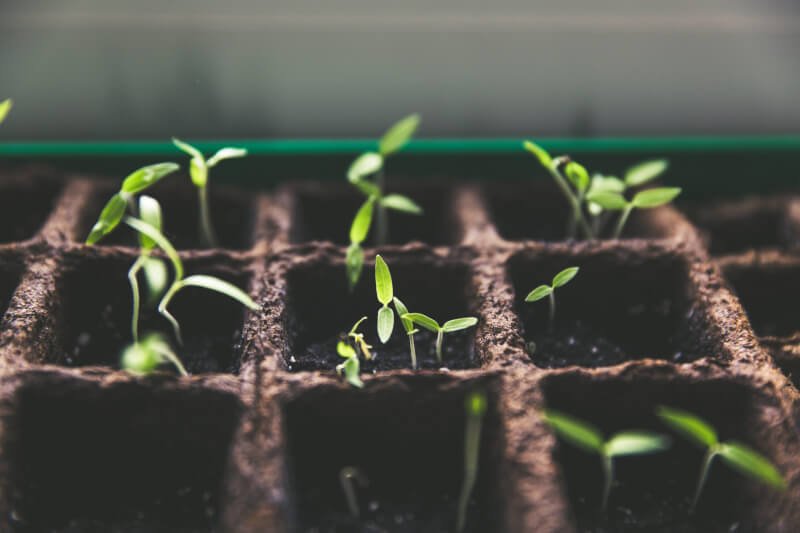
Planting Your Garden
Follow the spacing recommendations
Proper spacing is crucial to ensure optimal growth and prevent competition between plants. Each plant has specific spacing requirements, indicated on the seed packet or plant label. Follow these recommendations to give your plants enough room for their roots to develop, access sunlight, and receive adequate airflow. Crowding plants can lead to increased risk of disease, reduced yields, and stunted growth.
Dig suitable holes for each plant
When planting your garden, dig suitable holes for each plant, taking into account the size of the root ball and the spacing requirements. Use a garden trowel or a small shovel to dig a hole that is slightly wider and deeper than the root ball. Gently place the plant in the hole, ensuring that it sits at the same depth it was previously growing. Backfill the hole with soil, gently firming it around the roots, and water thoroughly.
Plant seeds at the appropriate depth
If you’re planting seeds directly in the ground, it’s essential to plant them at the appropriate depth. Different seeds have varying requirements, so refer to the seed packet for specific instructions. Generally, plant smaller seeds closer to the surface, while larger seeds should be planted deeper. Water the area lightly after planting to ensure good seed-to-soil contact.
Water the plants after planting
After planting, water your newly transplanted seedlings or seeds thoroughly. This helps settle the soil around the roots, removes air pockets, and promotes root establishment. Provide enough water to moisten the soil to the plant’s root depth. Monitor the soil moisture levels and water as needed, keeping in mind that plants typically require more frequent watering during hot and dry periods.
Providing Proper Care for Your Garden
Water the plants regularly
Regular watering is crucial to ensure the health and vitality of your garden. Most plants require consistent moisture throughout their growth stages. Monitor the soil moisture regularly and water deeply when the top inch of soil feels dry. Water in the morning to allow foliage to dry during the day, reducing the risk of fungal diseases. Consider using drip irrigation or a soaker hose to provide slow and even watering.
Apply organic fertilizers
To promote healthy growth and abundant harvests, it’s important to provide your plants with adequate nutrition. Organic fertilizers, such as compost, well-rotted manure, or organic granular fertilizers, are excellent choices for feeding your garden. Apply the fertilizers according to the package instructions, taking care not to over-fertilize, as this can cause nutrient imbalances or burn the plants.
Mulch to conserve moisture
Mulching is a valuable practice to conserve moisture, suppress weeds, and regulate soil temperature. Apply a layer of organic mulch, such as straw, wood chips, or shredded leaves, around your plants. This layer helps prevent water evaporation from the soil surface and reduces weed competition. Ensure that the mulch is applied a few inches away from the plant stems to prevent rot or collar rot diseases.
Keep an eye out for pests and diseases
Regularly monitoring your garden for pests and diseases is an essential part of providing proper care. Inspect your plants for any signs of pests, such as chewed leaves or discolored foliage. Look for symptoms of diseases, such as wilting, spots, or abnormal growth. Take immediate action if any issues are detected, including using organic pest control methods, removing infected plants, or seeking professional advice.
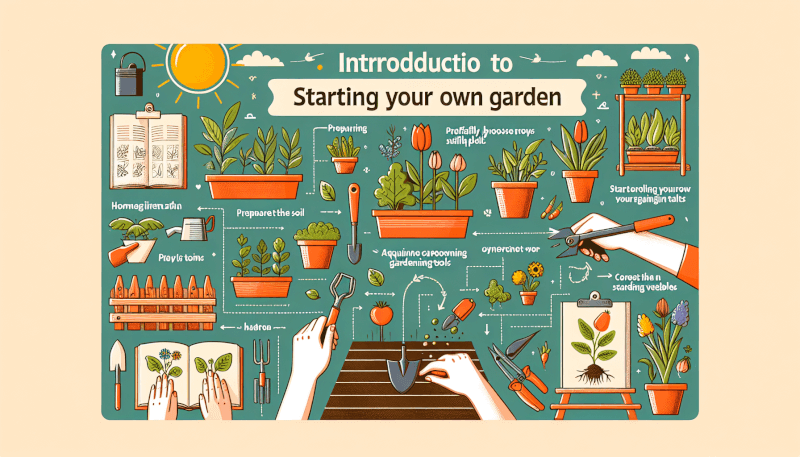
Harvesting Your Homegrown Produce
Monitor the ripeness of fruits and vegetables
As your plants mature, it’s important to monitor the ripeness of your fruits and vegetables. Each crop has different indicators of ripeness, such as color, size, or firmness. Refer to gardening resources or specific plant information to learn the signs of readiness for harvesting. Harvesting at the proper time ensures the best flavor and quality of your homegrown produce.
Use appropriate harvesting techniques
Using appropriate harvesting techniques is essential to avoid damaging your plants or reducing the quality of the produce. For fruits and vegetables, use clean gardening shears or a sharp knife to make clean cuts or gently twist to detach them from the plant. Avoid pulling or yanking on the plants, as this can cause damage to the roots or stems.
Avoid overcrowding and competition
To promote continuous growth and productivity, it’s important to avoid overcrowding and competition among your plants. Regularly thin out crowded areas, removing excess seedlings or plants that aren’t thriving. This allows the remaining plants to have adequate access to sunlight, nutrients, and space to grow. Maintaining proper spacing and removing any overcrowded plants helps prevent the spread of diseases and encourages healthier growth.
Plan for continuous harvest throughout the season
To make the most of your garden, it’s wise to plan for continuous harvest throughout the growing season. Succession planting is a technique where you stagger the planting of crops to ensure a constant supply of fresh produce. As you harvest one crop, plant new seeds or transplants to replace them. This ensures that you have a steady flow of homegrown fruits, vegetables, and herbs throughout the year.
Storing and Preserving Your Garden’s Bounty
Properly clean and handle your harvested produce
After harvesting your garden’s bounty, it’s important to properly clean and handle the produce to maintain its freshness and quality. Gently wash fruits and vegetables under cool running water, removing any dirt or debris. Dry them thoroughly before storing or cooking. Be gentle when handling delicate items to avoid bruising or damaging the produce.
Store fruits and vegetables in suitable conditions
Different fruits and vegetables have varying storage requirements. Some crops, like tomatoes and cucumbers, are best stored at room temperature to preserve flavor, while others, such as leafy greens, benefit from refrigeration to maintain freshness. Research the specific storage conditions for each crop and store them accordingly to extend their shelf life and retain their nutritional value.
Consider various preservation methods
If you have an abundance of produce, considering various preservation methods is a great way to enjoy your homegrown harvest throughout the year. Options include freezing, canning, pickling, or dehydrating. Each method has its own requirements and techniques, so it’s essential to learn the proper procedures to ensure the best results. Experiment with different preservation methods to find which ones suit your preferences and needs.
Freeze or can excess produce
Freezing and canning are two popular methods to preserve homegrown produce. Freezing involves blanching vegetables quickly in boiling water and then placing them in freezer-safe containers or bags. Canning, on the other hand, involves processing the produce in jars with a combination of heat and acid to create a shelf-stable environment. Both methods allow you to enjoy your garden’s bounty long after the growing season ends.
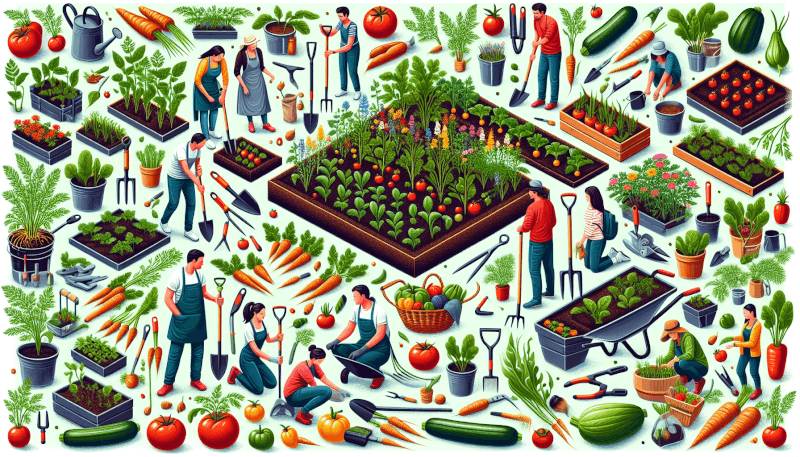
Exploring Healthy Recipes with Garden Ingredients
Experiment with different vegetable combinations
Having your own garden opens up endless possibilities for experimenting with different vegetable combinations in your recipes. Create colorful salads with a mix of fresh lettuce, tomatoes, cucumbers, and radishes. Roast a medley of root vegetables, such as carrots, potatoes, and beets, for a flavorful side dish. Let your creativity flow and try new combinations to incorporate the unique flavors of your garden into your meals.
Incorporate fresh herbs for added flavor
Fresh herbs are a fantastic addition to any dish and can elevate the flavors of your recipes to a whole new level. Harvest aromatic herbs like basil, rosemary, thyme, and mint from your garden to infuse your salads, soups, stews, and sauces with vibrant flavors. Experiment with herb-infused oils, vinegars, or butters to add an extra kick to your culinary creations.
Explore new cooking techniques
While utilizing fresh garden ingredients in your recipes, consider exploring new cooking techniques to enhance the flavors and textures. Try grilling vegetables to bring out their natural sweetness and create delicious charred edges. Blanching or steaming vegetables helps retain their vibrant colors and crispness. Experiment with different methods such as roasting, stir-frying, or sautéing to discover new dimensions of taste and versatility.
Find inspiration from garden-to-table cookbooks
If you’re looking for more inspiration and guidance on cooking with garden ingredients, explore garden-to-table cookbooks. These cookbooks specifically focus on recipes that highlight the flavors and versatility of homegrown produce. They often provide valuable tips, techniques, and creative ideas for utilizing your garden’s bounty in delicious and nutritious meals. Embrace the joy of garden-to-table cooking and savor the rewards of your green thumb.
Sharing Your Garden’s Abundance
Donate excess produce to local food banks
If your garden produces more than you can consume or preserve, consider donating the excess produce to local food banks or community organizations. Many food banks welcome fresh, homegrown produce as a nutritious addition to the meals they provide to those in need. Sharing your harvest with others not only reduces food waste but also spreads joy and nourishment within your community.
Exchange surplus with friends and neighbors
Another way to share your garden’s abundance is by exchanging surplus produce with friends and neighbors. Organize a neighborhood produce swap or simply surprise your loved ones with bags of fresh vegetables or fruits from your garden. This fosters a sense of community, promotes sustainable living, and encourages others to appreciate the value of homegrown goodness.
Host a garden party or potluck
To fully celebrate the success of your garden, consider hosting a garden party or potluck with family and friends. Showcase the delicious recipes you’ve created using your homegrown produce and let others experience the flavors and freshness of your garden. Encourage guests to bring dishes made with their own homegrown ingredients, creating a vibrant and diverse menu that celebrates the joys of gardening and healthy eating.
Share your gardening knowledge and experiences
Lastly, share your gardening knowledge and experiences with others who may be interested in starting their own gardens. Offer to mentor or assist beginner gardeners who may benefit from your expertise. Consider writing a blog or creating social media content to share gardening tips, tricks, and inspirational stories. By sharing your passion for gardening, you inspire and empower others to embark on their own green journey.
So, take these tips and get started on creating your own garden. Enjoy the process of nurturing and witnessing the growth of your plants, and reap the rewards of a bountiful harvest that will provide you with fresh, healthy ingredients for your culinary adventures. Happy gardening!

